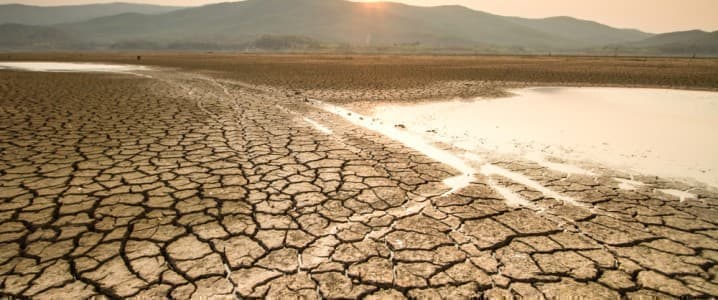On November 3, Uzbekistani Foreign Minister Vladimir Norov and his Kyrgyzstani counterpart Jeenbek Kulubaev signed a bilateral deal in Bishkek, under which Kyrgyzstan agreed to cede to Tashkent the territory surrounding the Kempir-Abad Reservoir, covering 4,485 hectares, in exchange for over 19,000 hectares elsewhere (Radio Free Europe/Radio Liberty, November 3). The deal effectively grants Uzbekistan control over the reservoir, a burning issue that has contributed to rising tensions between the two Central Asian neighbors (Eurasianet.org, November 17). On November 17, the Kyrgyzstani parliament approved a contentious border deal, and on November 29, Kyrgyzstani President Sadyr Japarov ratified the agreement, allowing for joint management of the reservoir (Asia Plus, November 29).
Central Asia has been historically plagued by tension over access to water resources. Even the administrative divisions under the Soviet Union constantly fought over the allocation of water and pastures (Tnu.tj, May 6, 2021). In this, with the introduction of private land ownership in Kyrgyzstan, some rented Tajikistani pastures have declared the property of Kyrgyzstani citizens. Although multiple factors (e.g., strategic, political and ethnic) contribute to the escalation of border tensions among the Central Asian neighbors, the management of water resources has been a perennial issue, frequently sparking conflict. Over the past decade, more than 150 conflicts have occurred on the shared Kyrgyzstani-Tajikistani borders, with victims on both sides (Cabar.asia, February 15, 2021). In September 2022, 24 Kyrgyzstanis died as a result of the escalation of armed conflict on the border (Novosti.kg, September 17). Water is vital to the Central Asian states’ agricultural and energy sectors and, by extension, their economies. Hydropower projects are of particular concern as they can generate electricity that is consumed both domestically and abroad. A strong example of this is the Nurek hydropower plant project in Tajikistan, which will have a planned capacity of 3,000 megawatts (Worldbank.org, October 24).
Furthermore, hydro-geographic features often serve as the basis for international borders. Even when agreed on and fully demarcated by neighboring nations, their strategic value lends itself to conflict. Since the fall of the Soviet Union, the failures of Kyrgyzstan, Uzbekistan and Tajikistan to either fully demarcate or agree on well over 1,000 kilometers of their mutual borders, has made conflicts over boundaries and resources commonplace (The Third Pole, May 28, 2021).
According to Gulmuria Borubaeva, a department head at the Border Control Agency of the Kyrgyzstani State Committee for National Security, one primary reason “for the ‘water conflict’ in Central Asia has been the ‘Golovnoi Vodorazdel,’ the main watershed area from where the runoff from mountainous rivers is distributed between three countries that the Ferghana Valley runs through: Tajikistan, Kyrgyzstan and Uzbekistan” (The Third Pole, May 28, 2021). The Golovnoi Vodorazdel, with the Isfara River and Tortkul Reservoir near the Vorukh exclave, has become the center for the water policies and rising tensions in the region.
Each year, conflict arises during the irrigation period from April to June over the use of water resources between Kyrgyzstan and Tajikistan, which share about 40 water channels. While Kyrgyzstani farmers living downstream complain that Tajikistanis living upstream use most of the water, the Tajikistani farmers living downstream decry the minimal amount of water arriving to their territory (Specialeurasia.com, September 29).
Recently, however, an uptick in the frequency of violent disputes at shared Kyrgyzstani-Tajikistani water distribution points suggest the increasing gravity of these disagreements. For instance, in April 2021, a deadly border conflict between the two sides was prompted by a dispute over water rights (Asia Plus, April 28, 2021). In September 2022, another conflict on the border between the two turned into a dangerous escalation involving heavy weapons. The death toll in that conflict was 63 people (Novosti.kg, September 28).
Given the current state of affairs, what is fueling these tensions over water resources in Central Asia? According to experts, environmental changes have raised temperatures in Central Asia faster than the global average, and this is melting glaciers in the Tibetan Plateau—also known as the “Third Pole”—disrupting water distribution in the region. As a result, some scientists predict that the region will become increasingly dryer, with more areas effectively becoming deserts. Correspondingly, the Central Asian state have witnessed some of their worst droughts in the past five years, resulting in shortages of water for irrigation and hydropower (Radio Free Europe/Radio Liberty, July 1).
Shifts in climate have also caused areas north of the region to receive more rain than those in the south, exacerbating the problems of downstream water loss (Intellinews.com, July 6). While the upstream Kyrgyzstanis and Tajikistanis have plenty of water, Uzbekistan wholly relies on a steady supply of water for its food security (The Third Pole, June 30). Thus, we can expect that claims over the water resources of the fertile Ferghana Valley region will increasingly spark conflicts throughout Central Asia. Only cooperation among these countries on water management will help mitigate these threats in the near future. In this sense, the latest Uzbekistani-Kyrgyzstani deal on joint water management could be a step in the right direction for lasting regional water politics.
By the Jamestown Foundation
More Top Reads From Oilprice.com:
- Musk Quietly Dumps $3.6 Billion In Tesla Stock
- Iran And Russia Accelerate De-Dollarization Push
- Germany Greenlights Purchase Of U.S. Fighter Jets


















